- Dengue viruses are spread to people through the bite of an infected Aedes species mosquitoes.
- Global incidence of dengue has increased massively over the past 50yrs, with transmission spreading into new countries.
- The Pacific Island Countries are all at risk of dengue outbreaks.
- Dengue is caused by one of any of four related viruses: Dengue virus 1, 2, 3, and 4.
- Dengue infection is usually asymptomatic and only about 1 in 4 infected people will get sick.
- For people who get sick with dengue, the infection causes flu-like illness, and occasionally develops into potentially lethal complicated called severe dengue.
- The virus may also transmitted from a mother to her unborn infant during pregnancy.
- There is no specific treatment for dengue/severe dengue, but early detection access to proper medical care lowers fatality rates below 1%.
Transmission of dengue, chikungunya and Zika
An Aedes mosquito vector becomes infected when they ingest the dengue, chikungunya or Zika virus when taking a blood meal on an infected human.
The virus develops and multiplies in the infected mosquito and then when it takes another blood meal, it is able to pass the arbovirus to other humans.
For dengue, in particular, the transmission cycle is complicated by the fact that there are actually four different types of dengue virus. Infection with one serotype of virus provides immunity to that serotype for life, but does not provide long term immunity to other serotypes. In fact, if someone becomes infected with a different serotype this may put them at a higher risk of developing haemorrhagic dengue, a more serious from the disease.
Which mosquitoes species can transmit dengue, Zika and chikungunya in the Pacific:
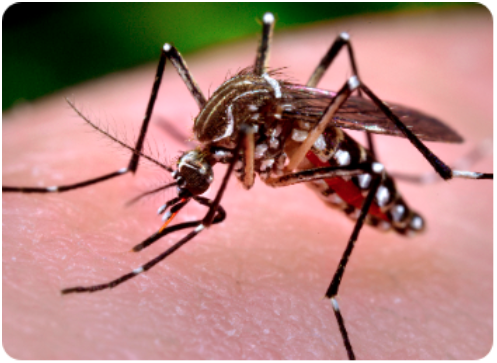
Aedes aegypti
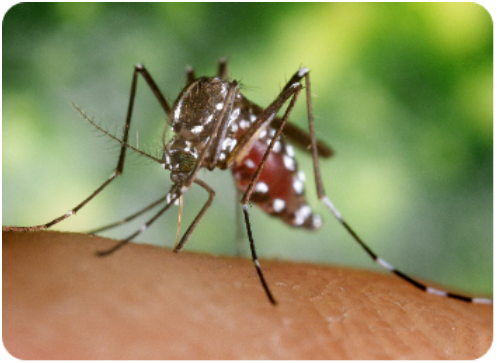
Aedes albopictus
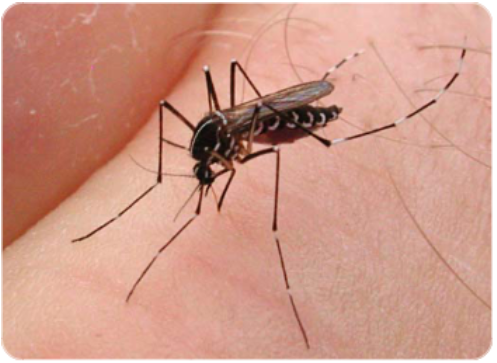
Aedes polynesiensis
The primary vector of dengue, Zika and chikungunya in the Pacific region is Aedes aegypti.
Aedes albopictus and Aedes polynesiensis are important secondary vectors.
There are also a number of other secondary vectors that are important within restricted geographic areas, or that contribute to the transmission of arboviruses once an outbreak has started.
- Aedes cooki
- Aedes hebrideus
- Aedes hensilli
- Aedes kesseli
- Aedes marshallensis
- Aedes pseudoscutellaris
- Aedes rotumae
- Aedes scutellaris
- Aedes tongae
Prevention and control of Aedes-borne arboviruses
The main method to control or prevent the transmission of dengue virus is to combat vector mosquitoes through:
- preventing mosquitoes from accessing egg-laying habitats by environmental management and modification;
- disposing of solid waste properly and removing artificial man-made habitats;
- covering, emptying, and cleaning of domestic water storage containers on a weekly basis;
- applying appropriate insecticides to water storage outdoor containers;
- using of personal household protection such as window screens, long-sleeved clothes, insecticide treated materials, coils and vaporizers;
- improving community participation and mobilization for sustained vector control;
- applying residual insecticides during outbreaks as one of the emergency vector-control measures, such as indoor residual spraying;
- active monitoring and surveillance of vectors should be carried out to determine effectiveness of control interventions.
SOURCE:
For guidance targeted to PICs to prevent and control arbovirus infections, see the Manual on Surveillance and Control of Aedes vectors in the Pacific
Overview of dengue in the Pacific
In 2022, and as of 1 May, 3,930 cases of dengue (DLI) have been reported. The majority of cases have been reported from Fiji.
Epidemic and emerging disease alerts in the Pacific as of 10 May 2022
Anopheles farauti s.s.
Aedes aegypti
Aedes albopictus
Aedes polynesiensis
Pacific Syndromic Surveillance System Dengue Like Illness (DLI)
Number of dengue like illness (DLI) cases reported
Country
W17
Year Total
American Samoa
0
0
Cook Islands
0
2
Fiji
154
3843
French Polynesia
0
0
Guam
0
0
Kiribati
0
2
Marshall Islands
0
0
Micronesia
0
11
Nauru
0
0
New Caledonia
0
11
New Zealand
0
0
Niue
0
0
Northern Mariana Islands
0
0
Palau
4
15
Papua New Guinea
0
0
Pitcairn Islands
0
0
Samoa
0
0
Solomon Islands
0
28
Tokelau
0
0
Tonga
0
0
Tuvalu
0
0
Vanuatu
4
6
Wallis & Futuna
0
12
Mosquito-borne disease outbreak news from the Region
- Zika virus is transmitted by Aedes mosquitoes, which primarily bite during the day.
- The virus infection is usually asymptomatic, but can lead to severe complications.
- Infection during pregnancy presents many serious hazards for mother and child (microcephaly in children).
- The virus infection is usually asymptomatic, but can lead to severe complications.
- Zika virus is a trigger of Guillain-Barre syndrome.
- The virus may also transmitted from a mother to her unborn infant, through sexual contact and blood transfusions.
- The transmission of Zika virus has been recorded from at least 20 Pacific Island Countries. The first major outbreak in the Region occurred on Yap Island in the Federated States of Micronesia in 2007. This was followed by a large outbreak in French Polynesia in 2013-14 which was associated with a rise in Guillain-Barre syndrome cases.
- There is currently no vaccine to prevent or medicine to treat Zika virus infection.
Transmission of dengue, chikungunya and Zika
An Aedes mosquito vector becomes infected when they ingest the dengue, chikungunya or Zika virus when taking a blood meal on an infected human.
The virus develops and multiplies in the infected mosquito and then when it takes another blood meal, it is able to pass the arbovirus to other humans.
For dengue, in particular, the transmission cycle is complicated by the fact that there are actually four different types of dengue virus. Infection with one serotype of virus provides immunity to that serotype for life, but does not provide long term immunity to other serotypes. In fact, if someone becomes infected with a different serotype this may put them at a higher risk of developing haemorrhagic dengue, a more serious from the disease.
Which mosquitoes species can transmit dengue, Zika and chikungunya in the Pacific:

Aedes aegypti

Aedes albopictus

Aedes polynesiensis
The primary vector of dengue, Zika and chikungunya in the Pacific region is Aedes aegypti.
Aedes albopictus and Aedes polynesiensis are important secondary vectors.
There are also a number of other secondary vectors that are important within restricted geographic areas, or that contribute to the transmission of arboviruses once an outbreak has started.
- Aedes cooki
- Aedes hebrideus
- Aedes hensilli
- Aedes kesseli
- Aedes marshallensis
- Aedes pseudoscutellaris
- Aedes rotumae
- Aedes scutellaris
- Aedes tongae
Prevention and control of Aedes-borne arboviruses
The main method to control or prevent the transmission of dengue virus is to combat vector mosquitoes through:
- preventing mosquitoes from accessing egg-laying habitats by environmental management and modification;
- disposing of solid waste properly and removing artificial man-made habitats;
- covering, emptying, and cleaning of domestic water storage containers on a weekly basis;
- applying appropriate insecticides to water storage outdoor containers;
- using of personal household protection such as window screens, long-sleeved clothes, insecticide treated materials, coils and vaporizers;
- improving community participation and mobilization for sustained vector control;
- applying residual insecticides during outbreaks as one of the emergency vector-control measures, such as indoor residual spraying;
- active monitoring and surveillance of vectors should be carried out to determine effectiveness of control interventions.
SOURCE:
For guidance targeted to PICs to prevent and control arbovirus infections, see the Manual on Surveillance and Control of Aedes vectors in the Pacific
Overview of dengue in the Pacific
In 2022, and as of 1 May, 3,930 cases of dengue (DLI) have been reported. The majority of cases have been reported from Fiji.
Epidemic and emerging disease alerts in the Pacific as of 10 May 2022
Anopheles farauti s.s.
Aedes aegypti
Aedes albopictus
Aedes polynesiensis
Pacific Syndromic Surveillance System Dengue Like Illness (DLI)
Number of dengue like illness (DLI) cases reported
Country
W17
Year Total
American Samoa
0
0
Cook Islands
0
2
Fiji
154
3843
French Polynesia
0
0
Guam
0
0
Kiribati
0
2
Marshall Islands
0
0
Micronesia
0
11
Nauru
0
0
New Caledonia
0
11
New Zealand
0
0
Niue
0
0
Northern Mariana Islands
0
0
Palau
4
15
Papua New Guinea
0
0
Pitcairn Islands
0
0
Samoa
0
0
Solomon Islands
0
28
Tokelau
0
0
Tonga
0
0
Tuvalu
0
0
Vanuatu
4
6
Wallis & Futuna
0
12
Mosquito-borne disease outbreak news from the Region
- Chikungunya is transmitted by Aedes mosquitoes, which primarily bite during the day.
- Chikungunya causes an acute febrile illness. The most common symptoms of infection are fever and joint pain.
- Chikungunya is often misdiagnosed with dengue and other diseases.
- Chikungunya virus infection seems to elicit long-lasting protective immunity.
- The virus may also transmitted from a mother to her unborn infant, through sexual contact and blood transfusions.
- There is currently no vaccine to prevent or medicine to treat chikungunya virus infection.
- Chikungunya was largely absent from the Pacific Island Countries until an outbreak in New Caledonia in 2011. Chikungunya outbreaks or cases have since been reported from at least 9 Pacific Island Countries.
Transmission of dengue, chikungunya and Zika
An Aedes mosquito vector becomes infected when they ingest the dengue, chikungunya or Zika virus when taking a blood meal on an infected human.
The virus develops and multiplies in the infected mosquito and then when it takes another blood meal, it is able to pass the arbovirus to other humans.
For dengue, in particular, the transmission cycle is complicated by the fact that there are actually four different types of dengue virus. Infection with one serotype of virus provides immunity to that serotype for life, but does not provide long term immunity to other serotypes. In fact, if someone becomes infected with a different serotype this may put them at a higher risk of developing haemorrhagic dengue, a more serious from the disease.
Which mosquitoes species can transmit dengue, Zika and chikungunya in the Pacific:

Aedes aegypti

Aedes albopictus

Aedes polynesiensis
The primary vector of dengue, Zika and chikungunya in the Pacific region is Aedes aegypti.
Aedes albopictus and Aedes polynesiensis are important secondary vectors.
There are also a number of other secondary vectors that are important within restricted geographic areas, or that contribute to the transmission of arboviruses once an outbreak has started.
- Aedes cooki
- Aedes hebrideus
- Aedes hensilli
- Aedes kesseli
- Aedes marshallensis
- Aedes pseudoscutellaris
- Aedes rotumae
- Aedes scutellaris
- Aedes tongae
Prevention and control of Aedes-borne arboviruses
The main method to control or prevent the transmission of dengue virus is to combat vector mosquitoes through:
- preventing mosquitoes from accessing egg-laying habitats by environmental management and modification;
- disposing of solid waste properly and removing artificial man-made habitats;
- covering, emptying, and cleaning of domestic water storage containers on a weekly basis;
- applying appropriate insecticides to water storage outdoor containers;
- using of personal household protection such as window screens, long-sleeved clothes, insecticide treated materials, coils and vaporizers;
- improving community participation and mobilization for sustained vector control;
- applying residual insecticides during outbreaks as one of the emergency vector-control measures, such as indoor residual spraying;
- active monitoring and surveillance of vectors should be carried out to determine effectiveness of control interventions.
SOURCE:
For guidance targeted to PICs to prevent and control arbovirus infections, see the Manual on Surveillance and Control of Aedes vectors in the Pacific
Overview of dengue in the Pacific
In 2022, and as of 1 May, 3,930 cases of dengue (DLI) have been reported. The majority of cases have been reported from Fiji.
Epidemic and emerging disease alerts in the Pacific as of 10 May 2022
Anopheles farauti s.s.
Aedes aegypti
Aedes albopictus
Aedes polynesiensis
Pacific Syndromic Surveillance System Dengue Like Illness (DLI)
Number of dengue like illness (DLI) cases reported
Country
W17
Year Total
American Samoa
0
0
Cook Islands
0
2
Fiji
154
3843
French Polynesia
0
0
Guam
0
0
Kiribati
0
2
Marshall Islands
0
0
Micronesia
0
11
Nauru
0
0
New Caledonia
0
11
New Zealand
0
0
Niue
0
0
Northern Mariana Islands
0
0
Palau
4
15
Papua New Guinea
0
0
Pitcairn Islands
0
0
Samoa
0
0
Solomon Islands
0
28
Tokelau
0
0
Tonga
0
0
Tuvalu
0
0
Vanuatu
4
6
Wallis & Futuna
0
12
Mosquito-borne disease outbreak news from the Region
- Malaria is a mosquito-borne disease caused by a parasite. Four kinds of malaria parasites infect humans: Plasmodium falciparum, P. vivax, P. ovale, and P. malariae.
- People with malaria often experience fever, chills, and flu-like illness. Left untreated, they may develop severe complications and die.
- In the Pacific, malaria is endemic in Papua New Guinea, the Solomon Islands and Vanuatu.
- Malaria incidence has nearly doubled in Papua New Guinea and the Solomon Islands since 2015.
- Vanuatu is targeting country-wide elimination.
- Children under 5 years old are the most vulnerable group.
- Although malaria can be a deadly disease, illness and death from malaria can usually be prevented.
- Malaria may also be transmitted from a mother to her unborn infant before or during delivery or through blood transmission.
- Several good antimalarial drugs are available and should be taken early on.
Transmission of malaria
The transmission of human malaria involves cyclical infections of humans and mosquitoes.
Anopheles species becomes infected when taking a blood meal on an infected human.
The pathogen develops in the mosquito and then the infected mosquito can go on to transmit malaria to other humans with each blood meal it takes.
Malaria parasites develop through many different forms inside both the mosquito and human hosts.
Which mosquitoes species can transmit dengue, Zika and chikungunya in the Pacific:
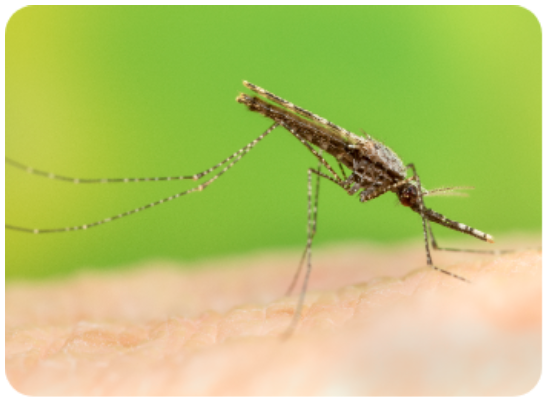
Primary vectors
- Anopheles farauti s.s
- Anopheles koliensis s.l.
- Anopheles punctulatus
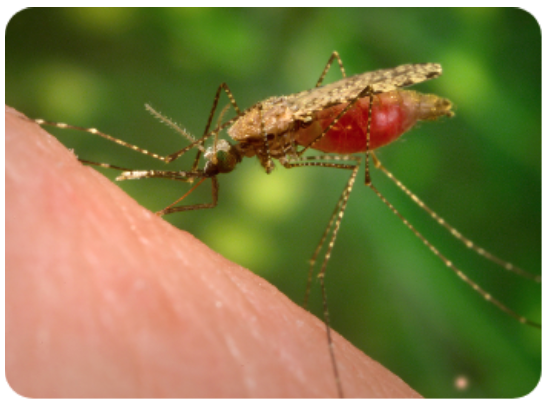
Secondary vectors
- Anopheles bancroftii s.l
- Anopheles hinescorum
- Anopheles oreios
- Anopheles farauti 4
- Anopheles farauti 8
- Anopheles longirostris s.l.
- Anopheles karwari
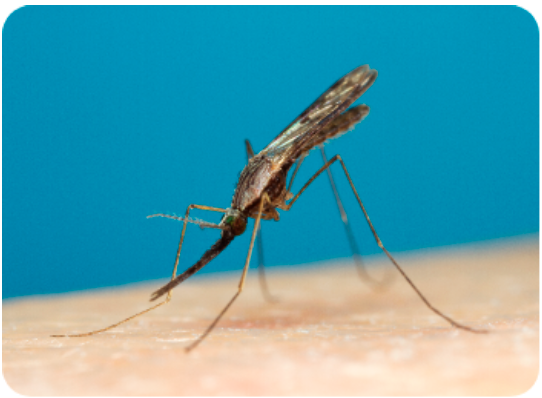
Oriental introductions
- An. barbirostris
- An. indefinitus
- An. subpictus
- An. vagus
- An. litoralis
- An. campestris
In the Southwest Pacific, Anopheles mosquitoes are naturally found in the Moluccas, the islands of New Guinea, the Solomon Islands, and Vanuatu. Over 40 species of Anopheles are found in the region, and many of these can transmit malaria.
Prevention & control of malaria
Vector control is one of the main methods to prevent and control malaria.
Malaria vector control interventions recommend for large-scale deployment are:
- ITNs that are prequalified by WHO, which in many settings continue to be long-lasting insecticidal nets (LLINs); and
- indoor residual spraying (IRS) with a product prequalified by WHO.
Once optimal overage with one of these interventions has been achieved, supplementary interventions may be considered for deployment depending on the specifics of the population, situation or setting. These include personal protection measures that have a primary use-pattern of protecting individual users, although they may have some as yet unproven impact when deployed at the community level.
For more detail see the WHO Guidelines for malaria here:
https://pacmossi.org/guidelines-for-malaria/
Dengue-like illnessMalariaOverview of dengue in the Pacific
In 2022, and as of 1 May, 3,930 cases of dengue (DLI) have been reported. The majority of cases have been reported from Fiji.
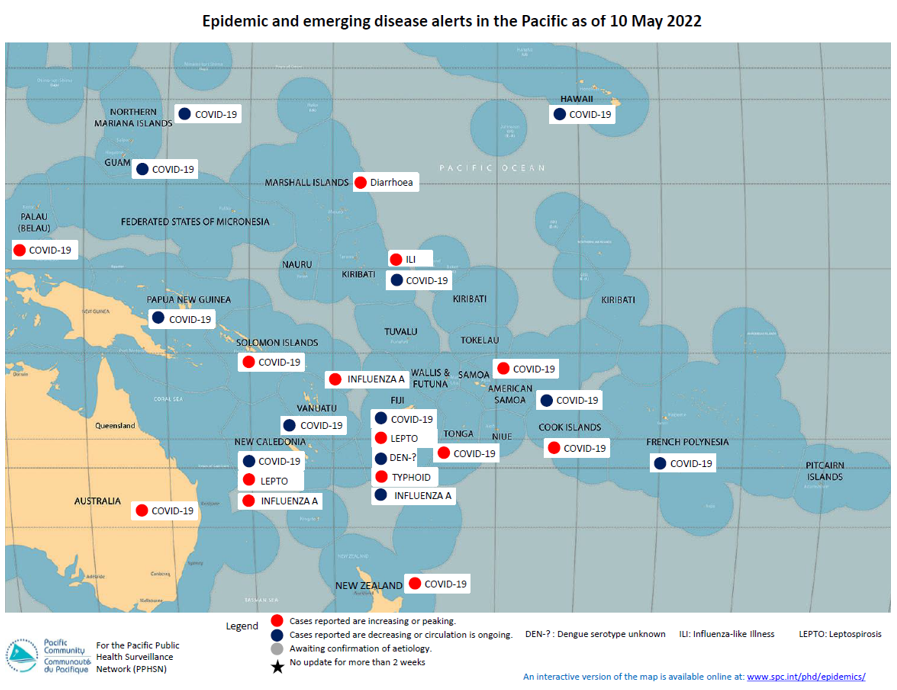
Overview of malaria in the Pacific
In the Pacific, malaria is endemic in Papua New Guinea, the Solomon Islands and Vanuatu. The majority of cases are reported from Papua New Guinea and the Solomon Islands. Vanuatu is targeting country-wide elimination.
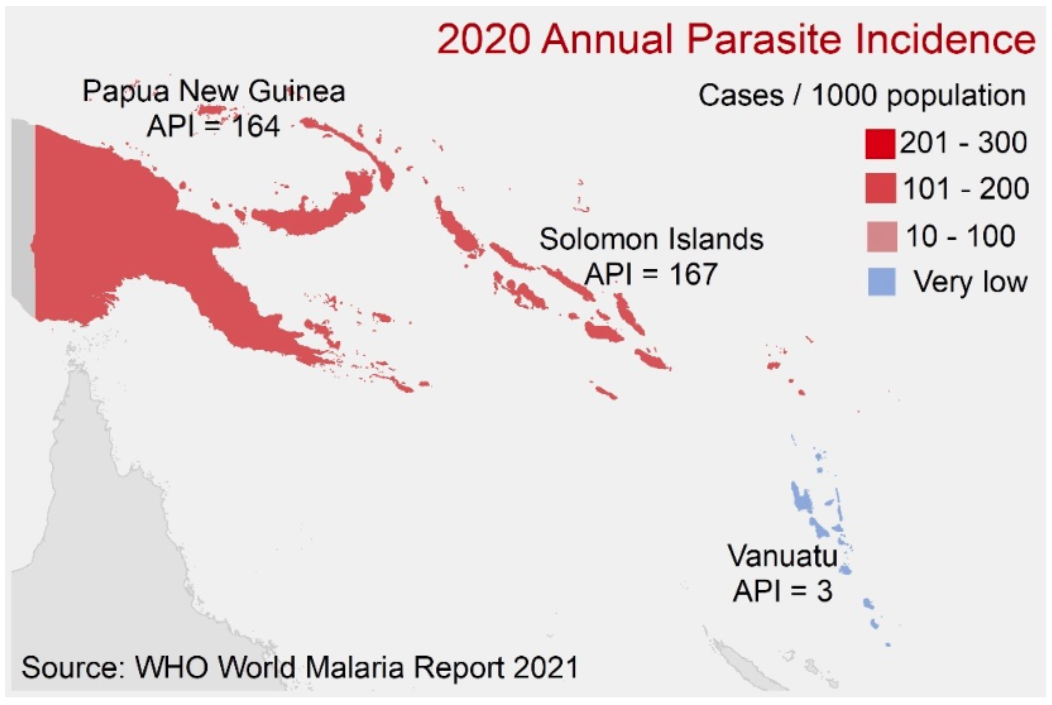
Estimated malaria cases and deaths for 2020
Population denominator
Cases
Deaths
Papua New Guinea
8,947,027
8,947,027
2,962
Solomon Islands
663,122
663,122
161
Vanuatu
307,150
307,150
-
Relative case load for Plasmodium falciparum and P. vivax cases
Mosquito-borne disease outbreak news from the Region